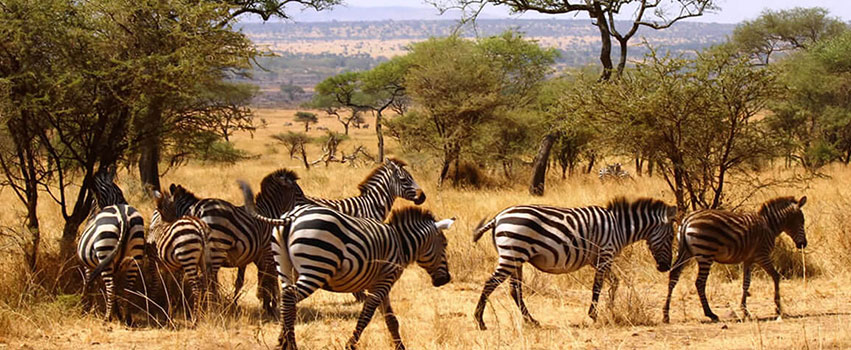Safari Overview
Our 11 Days Kenya & Tanzania Wildlife Safari takes you to the most famous game parks in Africa. Masai Mara Game Reserve which is the most popular tourism destination in Kenya. Located in the Great Rift Valley in primarily open grassland. Wildlife is most concentrated on the reserve’s western escarpment. Its regarded as the jewel of Kenya’s wildlife Viewing areas. The annual wildebeest’s migration alone involves over 1.5 million animals arriving in July and departing in November. Hardly can a visitor miss to spot the big five. The phenomenal wildbeeste migration which is a spectacular event only seen in Masai mara is the the wonder of the world.
Lake Nakuru National Park, found in the foot of the great rift valley has an elevation of 1754 meters above sea level, is home to stunning flocks of lesser and Greater Flamingos, which literally turn the lake-shores in to a magnificent pink stretch. This is the only park you are asured of seeing the rhinos in black and white and the Rothschild Giraffe.
Amboseli National Park is situated in Loitoktok District, Rift Valley Province of Kenya. Amboseli National Park ecosystem is mainly savannah grassland spread across the Kenya -Tanzania border, an area of low scrubby vegetation and open grassy plains, all of which makes for easy game viewing. It is the best place in Africa to get close to free-ranging elephants, which are for sure a breath-taking sight to behold, whereas various African lions, buffaloes, giraffes, zebras and other species can also be spotted, offering spectacular photographic experiences.
Tarangire National Park offers an unparalleled game viewing, and during the dry season elephants abound. Families of the pachyderms play around the ancient trunks of baobab trees and strip acacia bark from the thorn trees for their afternoon meal. Breathtaking views of the Maasai Steppe and the mountains in the south make a stopover at Tarangire a memorable experience. Herds of up to 300 elephants scratch the dry river bed for underground streams, while migratory wildebeest, zebra, buffalo, impala, gazelle, hartebeest and eland crowd the shrinking lagoons. It’s the greatest concentration of wildlife outside the Serengeti ecosystem.
The Serengeti National Park is home to the greatest wildlife spectacle on earth – the great migration of wildebeest and zebra. The resident population of lion, cheetah, elephant, giraffe, and birds is also impressive. There’s a wide variety of accommodation available, from luxury lodges to mobile camps. The park covers 5,700 sq miles, (14,763 sq km), it’s larger than Connecticut, with at most a couple hundred vehicles driving around. It’s classic savannah, dotted with acacias and filled with wildlife. The western corridor is marked by the Grumeti River, and has more forests and dense bush. The north, Lobo area, meets up with Kenya’s Masai Mara Reserve, is the least visited section.
The Ngorongoro Crater is the world’s largest intact volcanic caldera. Forming a spectacular bowl of about 265 square kilometres, with sides up to 600 metres deep; it is home to approximately 30,000 animals at any one time. The Crater rim is over 2,200 metres high and experiences its own climate. From this high vantage point it is possible to make out the tiny shapes of animals making their way around the crater floor far below. The crater floor consists of a number of different habitats that include grassland, swamps, forests and Lake Makat (Maasai for ‘salt’) – a central soda lake filled by the Munge River. All these various environments attract wildlife to drink, wallow, graze, hide or climb.
Lake Manyara National Park lies 130 kilometers outside of Arusha town and encompasses Lake Manyara and its surroundings. There are five different vegetation zones including groundwater forest, acacia woodland, open areas of short grass, swamps and the lake’s alkaline flats. The park’s wildlife includes more than 350 species of birds, baboon, warthog, giraffe, hippopotamus, elephant and buffalo. If lucky, catch a glimpse of Manyara’s famous tree-climbing lions. Night game drives are permitted in Lake Manyara. Located beneath the cliffs of the Manyara Escarpment, on the edge of the Rift Valley, Lake Manyara National Park offers varied ecosystems, incredible bird life, and breathtaking views.


